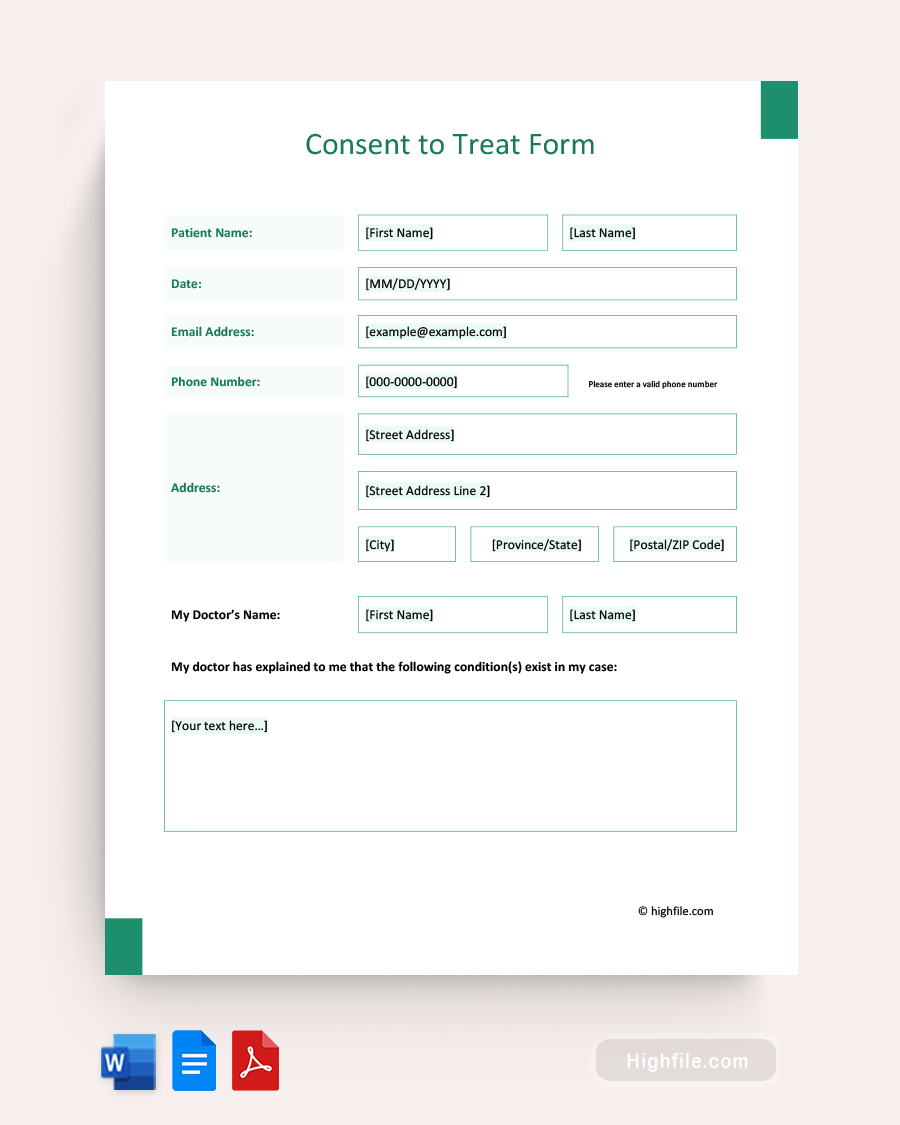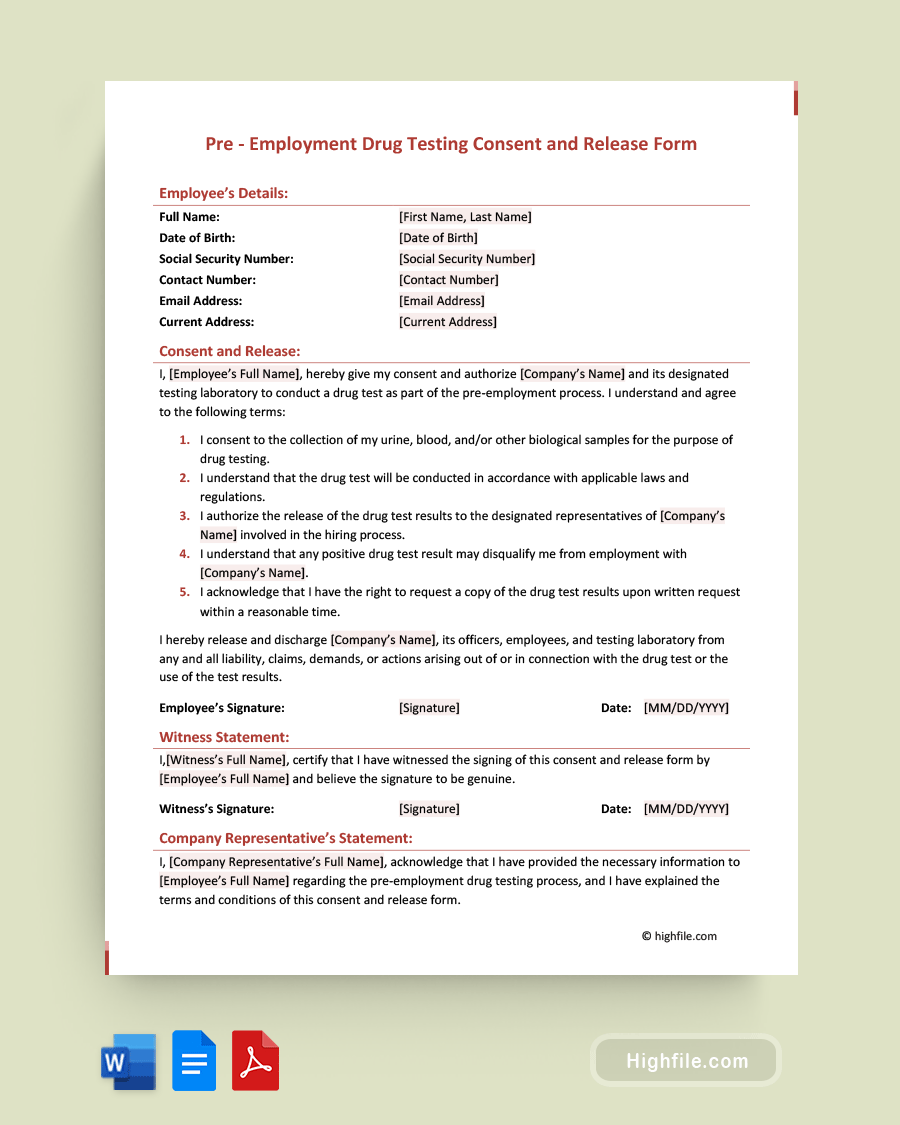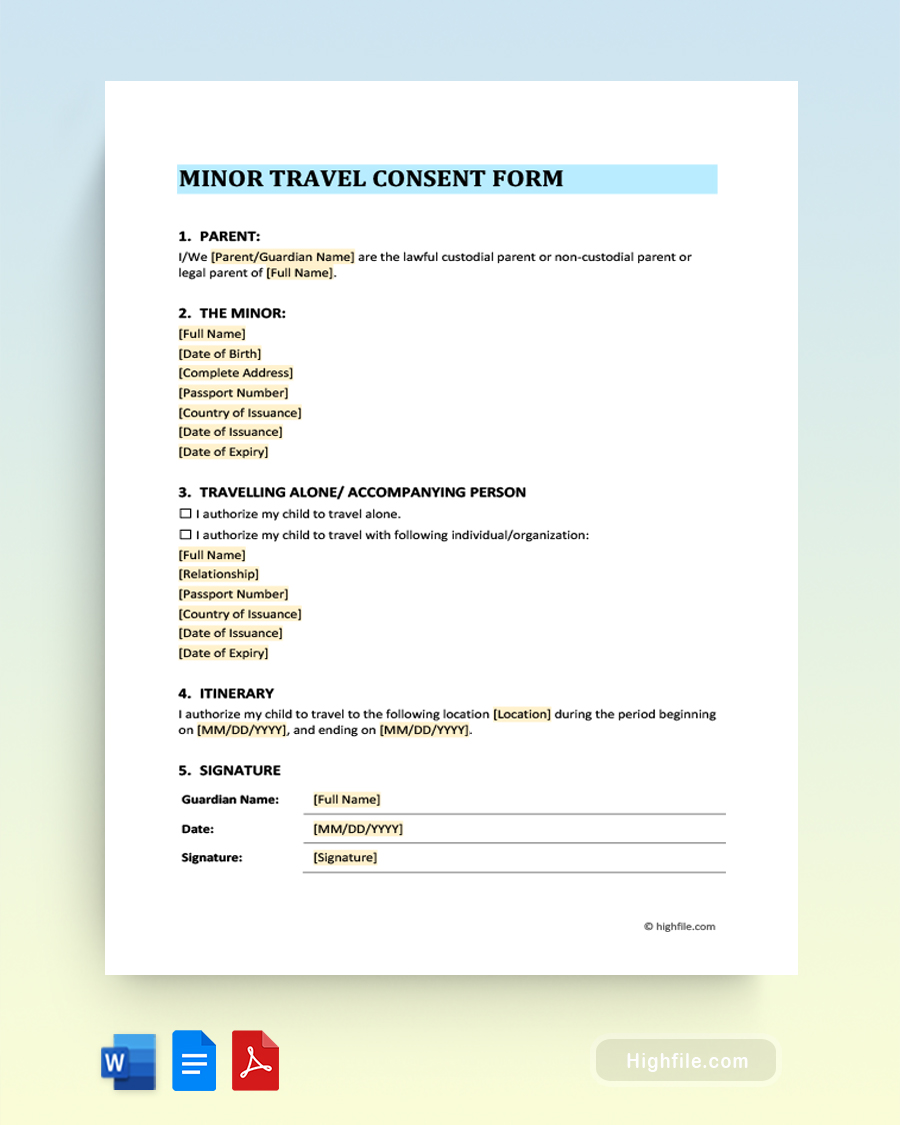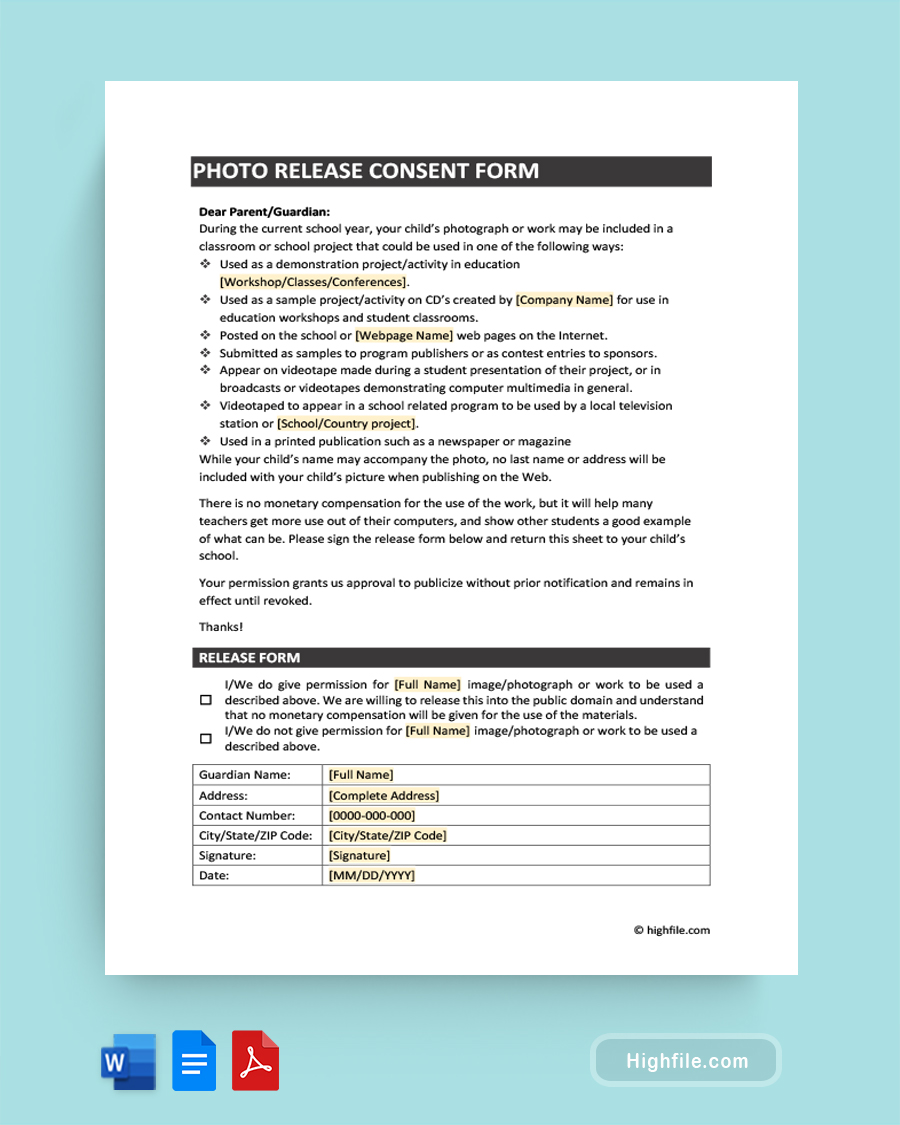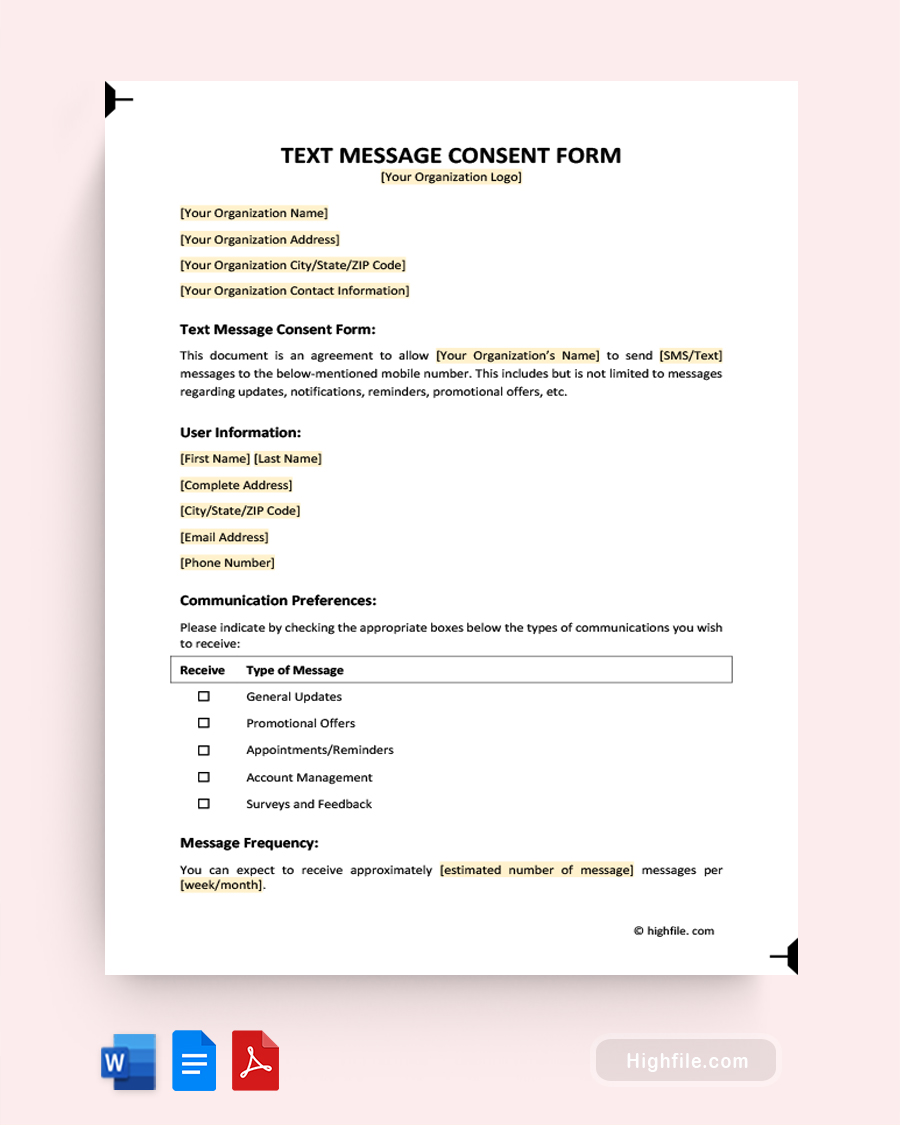Consent to treat forms are a vital, legally required part of the patient-doctor relationship that respects patient rights and helps build trust. Doctors need patients to sign these forms to ensure they understand the risks and benefits of any treatment they receive. This form outlines precisely what type of care the patient consents to and serves as a record that the patient is aware of any potential risks or complications associated with the treatment. Most importantly, doctors can only offer medical care with the appropriate consent and signatures. Using a professionally designed consent-to-treat form template can help you create these vital documents efficiently and effectively.
What Is a Consent to Treat Form?
A Consent to Treat Form is a document that legally grants permission for a healthcare provider to give medical treatment to a patient. The document outlines the patient’s rights, the provider’s responsibilities, and the conditions under which medical treatment may be provided. It serves as a record of the agreement between the provider and the patient. The Consent to Treat Form is essential because it helps protect both parties. Additionally, it ensures that the patient is aware of what types of treatments they are consenting to and any potential associated risks.
Why Is Consent to Treat Form Important?
A Consent to Treat form demonstrates that a patient has given informed consent to receive medical treatment. This document is essential for medical procedures, as it serves as legal protection for both the patient and the healthcare provider. The form records the patient’s approval and understanding of the treatment/procedure and any potential risks involved in seeking medical care. Additionally, the Consent to Treat form helps ensure that healthcare providers respect patients’ wishes for their treatment options.
Sometimes these vital documents also outline the patient’s rights and help to ensure that their wishes are respected. By signing such forms, patients validate their expectations of competent care and demonstrate that they have read about and discussed the necessary treatment, its alternatives, and the expected outcome.
Essential Elements of Consent to Treat Form
The essential elements of consent to treat form cover critical aspects of patient and doctor identification, the patient’s understanding of the procedure, risks, and consequences of signing. Below we’ve created an outline of what to expect on the template and why it’s included. However, you can quickly and easily adapt or add to this form to adhere to your local legal requirements and best practices.
- Business Logo or Name- Including the name or logo of your practice is a standard practice among professionals that helps with business branding and clarifying the document’s source.
- Form Title- Your form title should state in large bold print, “Consent to Treat” or “Consent to Treatment Form.”
- Patient Name and the Date- Put the patient’s full legal name and the current date here to identify whose form it is and when it was distributed.
- Client Contact Information- This helps in case you need to contact the client and can help clarify who you are speaking to in the case of multiple patients with similar names, like John Smith.
- Doctor’s Name- Putting the doctor’s name on the form shows who recommended the patient or who is treating them.
- Patient Written Comprehension Statements- In this area, you leave a brief statement that says the patient understands and has discussed the following conditions for which they are consenting to receive treatment and a blank where they must fill that information in to show they comprehend this, and a second similar statement and blank for their understanding of how the evaluation and proposal of the treatment were made. By having the patient fill out this section, you can quickly assess their level of knowledge and, if necessary, discuss the condition or proposed treatment further. In this case, you should have them fill out a new, clean copy of the form once their understanding is complete.
- Risk Awareness Assent Statements- List the risks of the treatment in this section.
- Consent Statement- Here, you should include a paragraph stating assent from the patient and that they have had ample opportunity to discuss and ask questions to clarify their condition and the treatment they consent to receive.
- Signature and Date Lines- The signature or e-signature and date are the effective beginning of the consent. This is what makes the form a legal document, and without it, the form is invalid.
Tips for Creating a Consent to Treat Form Template
Creating your consent to treat form is essential, so we’ve included these handy tips to help you while writing your document. Feel free to bookmark this page and use it as a reference when filling in your template.
- Completion and Comprehension- Ensuring you include all the necessary, required, and relevant data is essential. However, you must also ensure the reader fully comprehends what they are reading. If necessary, use visual aids or explain things differently.
- Appropriate Signatures- Patients typically sign their consent to treat forms. However, if they are underage or otherwise incapable of reading, understanding, and signing the document themselves, you may need additional signatures, such as those from a spouse, parent, or guardian.
- Concise, Clear Language- Keep your document brief and to the point to the best of your ability. Avoid complex medical terms and industry jargon, and remember that the average reading level is around eighth grade in terms of comprehension.
- Translation and Readers- Sometimes, your patient may need a translator or a reader to understand the consent form. However, translating your documents into other languages can help minimize this need, especially in diverse areas.
- Update Regularly- Although consent to treat form templates can be reused as often as you like and are often used for many years, that doesn’t mean the information you input today will be relevant or complete in a year. Take the time to update your forms at least once annually or as often as necessary to reflect changes in policy, best practices, or legal requirements.
Legal Considerations about Consent to Treat Form Template
The legal considerations about a consent to treat form template are essential to your understanding of how to use this document. We will provide an overview of the key legal concerns when creating a consent to treat form template for medical treatment. Here we discuss the importance of informed consent, the potential legal implications of not obtaining proper permission, and other significant issues.
- Capacity- A patient must have the ability to consent for the form to be valid. For example, if they are incapacitated, intoxicated, or do not understand what they are signing, they cannot consent. Regardless of whether they put a signature on the form, it is not legally binding in these cases.
- Legal Requirement- The specific legal requirements in your area may vary significantly from those of other states or countries. As a medical care provider, it is your responsibility to know and implement those requirements while composing your consent documents.
- Consequences of Failure- The consequences of failing to obtain legally recognized informed consent vary widely. However, if you do not adhere to the letter of the law, you could be sued for malpractice or even lose your license in extreme cases.
- Additional Consent- A single consent to treat form is not necessarily the only requirement. Moreover, people from some backgrounds also have religious or cultural needs, which you must consider.
- Documentation and Recordkeeping- You must document the informed consent process and keep appropriate records for the legally required duration.
- Disclaimer- Finally, it is essential to understand that a consent to treat form template is not in and of itself a legally binding document. You must add the correct information, including any sections not mentioned in the template but required in your area. Also, ensure you adhere to patient rights and best practices for obtaining informed consent.
- Phrasing and Complications- Doctors should be careful in how they phrase the consent forms to ensure that patients will sign them willingly and protect themselves from any claims or lawsuits in the future. The document should specify what type of treatment and procedure it is, specific risks related to that type of medical care, and possible complications with this particular procedure. It should also state how the patient will be notified of any serious complications that may arise from this treatment and may include a section about who the doctor can or should contact in case of emergencies. Moreover, doctors should inform patients about which drugs and remedies are available for them to use in the case of a complication during treatment.
FAQs
To help you make the most of your consent-to-treat template, we’ve answered the most frequently asked questions about this topic below. You will find additional information about what happens if a healthcare provider fails to obtain informed consent and what patients can do if they change their minds later and wish to revoke their consent, among other helpful facts.
Yes, a patient can refuse to sign a Consent to Treat form. In this case, the doctor or healthcare provider may be unable to provide medical treatment to the patient, as they will not have the legal right to do so without consent. It is important to remember that while the patient can refuse to sign the form, this may have consequences for their health and well-being if they need medical care and do not receive it. As a medical provider, you must explain the risks and benefits and, wherever possible, also ensure the patient knows the alternatives. This includes doing nothing and the consequences of that choice.
When a patient signs a Consent to Treat form but later changes their mind, they have the right to rescind their consent. In this case, the healthcare provider must cease treatment and abide by the patient’s wishes. The healthcare provider must also explain any potential risks associated with stopping treatment. Furthermore, the healthcare provider must document the revocation of consent in the patient’s medical record.
A healthcare provider must obtain informed consent from a patient or their legal representative to perform any medical care, treatments, or procedures. Failure to obtain the proper consent is unethical and may lead to legal repercussions. The patient may have grounds to sue the healthcare provider for negligence if they suffer any harm or injury due to the lack of informed consent. Additionally, the healthcare provider may be subject to disciplinary action from their professional licensing board. Lastly, the healthcare provider may be liable for any financial costs associated with the medical care or treatments performed without the patient’s knowledge and consent.
Healthcare providers cannot use a standard Consent to Treat form for all patients and procedures. Each patient’s situation and condition may require different information and consent. For example, some treatments may require additional approval or waivers beyond a standard form. Consent to Treat varies slightly from state to state and may need to be adjusted to reflect local laws and regulations or changes over time. Additionally, some procedures may require the patient to provide specific information unrelated to the process but necessary for the healthcare provider to provide care, such as allergy information. To ensure that all aspects of the patient’s care are adequately documented and consented to, healthcare providers should tailor their consent forms for each procedure and patient.
Most procedures require a consent to treatment form. Common medical procedures that require this crucial document include biopsies, excisions, surgeries under anesthesia, medical imaging tests such as X-rays and CT scans, blood transfusions, and general anesthesia or sedation. The form explains the potential risks associated with the procedure as well as any alternative treatments that may be available. In addition, it ensures that the patient acknowledges these risks and understands the procedure’s potential benefits.
Consent to treat is a legal document that gives a healthcare provider permission to provide medical care to a patient. It is typically signed by the patient or the patient’s legal guardian. Informed consent is when a healthcare provider explains the risks, benefits, and alternatives of a medical procedure or treatment to a patient before they agree to it. Informed consent requires that the patient understand the information provided and make an informed decision about their care. The informed consent process also includes the patient’s signature on a document that states they have been notified of the recommendation, had an opportunity to ask questions, and agree to the proposed treatment. In short, consent to treat is a form, while informed consent is a process.
Final Thoughts
Medical professionals use a consent to treat form to obtain and record the patient’s permission to provide a proposed treatment. It is vital to obtain informed consent from patients before providing any medical treatment. Doing this ensures that the patient is aware of the risks and benefits of the proposed treatment and is comfortable with going through with it. The consent to treat form also protects the patient and the healthcare provider in case of legal action. By signing this document, the patient confirms that they have been informed of the potential risks, benefits, and alternatives associated with the procedure and accept responsibility for those risks. Choosing a Consent to Treat Form Template can help ensure you get all the vital information where it needs to go to have informed consent.
